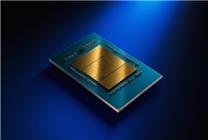SanDisk Projects Long-Term NAND Flash Memory Shortage; Data Centers to Dominate Demand
Summary:
- Sandisk anticipates a prolonged shortage of NAND flash memory supplies lasting until at least the end of 2026.
- Data centers are set to become the largest consumers of NAND flash memory, surpassing mobile devices.
- Significant technological advancements and an impressive quarterly performance mark SanDisk’s growth trajectory.
SanDisk recently released its financial report for the first fiscal quarter of 2026, laying bare the current dynamics of the NAND flash memory market. During the subsequent conference call, key insights emerged about the company’s performance and the evolving landscape of flash memory supply and demand.
Persistent Supply Shortages
In the latest reporting quarter, demand for SanDisk’s NAND flash memory products significantly outpaced supply capabilities. This imbalance underscores a looming supply shortage anticipated to persist throughout 2026, with indications that it might extend beyond that timeline. The company’s CEO, David Goeckeler, noted a transformative shift in the contracting landscape among major customers. The traditional quarterly ordering model is being replaced by multi-year agreements, with some customers proactively sharing demand forecasts as far out as 2027. This change indicates a longer-term collaboration and planning in a highly competitive market.
Data Centers: The New Frontier
One of the most striking aspects of the financial report is the explosive growth forecast for data centers. SanDisk projects that, for the first time in 2026, data centers will eclipse mobile devices to become the largest consumers of NAND flash memory. This dual impetus of technological advancements and burgeoning market demand is set to drive the industry into an innovative phase, compelling companies to ramp up investments in research, development, and production capacity to satisfy escalating needs.
The implications are profound; the burgeoning demand for NAND flash memory in data centers is likely to stimulate expansions across the related industrial ecosystem, ultimately leading to a more robust marketplace.
Financial Highlights
SanDisk’s financial results showcased remarkable performance in the first quarter of fiscal year 2026. The company posted a revenue of $2.308 billion, which represents a substantial 23% increase year-over-year. It also recorded a month-on-month revenue growth of 21%. This remarkable financial trajectory was largely fueled by the impressive performance of its data center segment, which witnessed a staggering 26% increase in quarterly revenue compared to the previous quarter. This burgeoning sector has emerged as a critical engine for overall company growth.
Technological Advancements
In addition to its financial achievements, SanDisk has made significant strides in technology. The introduction of its new BiCS8 process technology is particularly noteworthy, accounting for 15% of the company’s shipments during the quarter. The company has ambitious plans to elevate this technology to mainstream production capacity by the end of the fiscal year. These advancements not only reinforce SanDisk’s standing in the NAND flash memory market but also signal the company’s commitment to innovation in a rapidly evolving sector.
Conclusion
In summary, SanDisk is navigating a complex market environment marked by unprecedented demand for NAND flash memory, particularly from data centers. The anticipated supply shortages and proactive customer contracts will likely shape the industry landscape in the coming years. With substantial financial growth and technological innovations on the horizon, SanDisk is poised to play a pivotal role in the future of the NAND flash memory market.
As the industry adapts to these changes, stakeholders should monitor SanDisk’s strategies and performance closely, as they may well set the tone for the future of NAND flash memory production and utilization.








